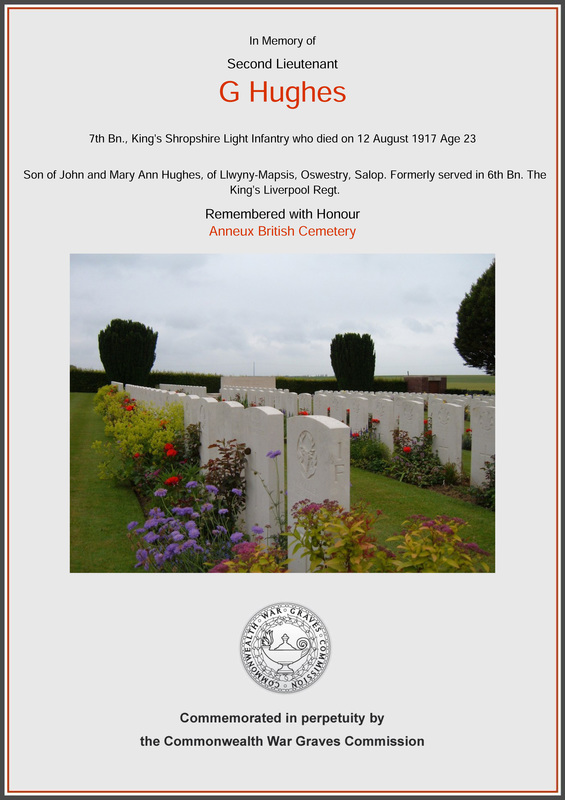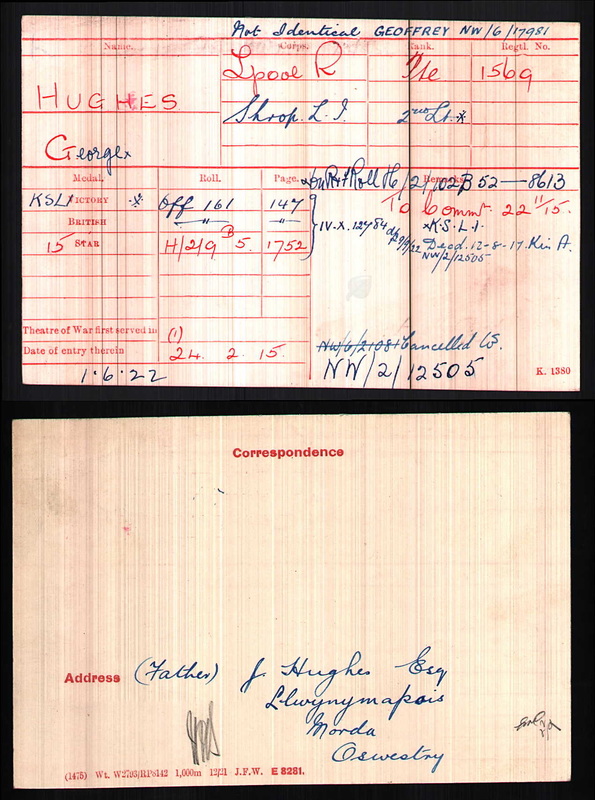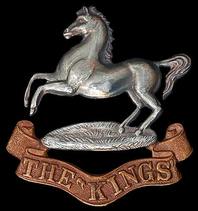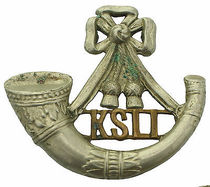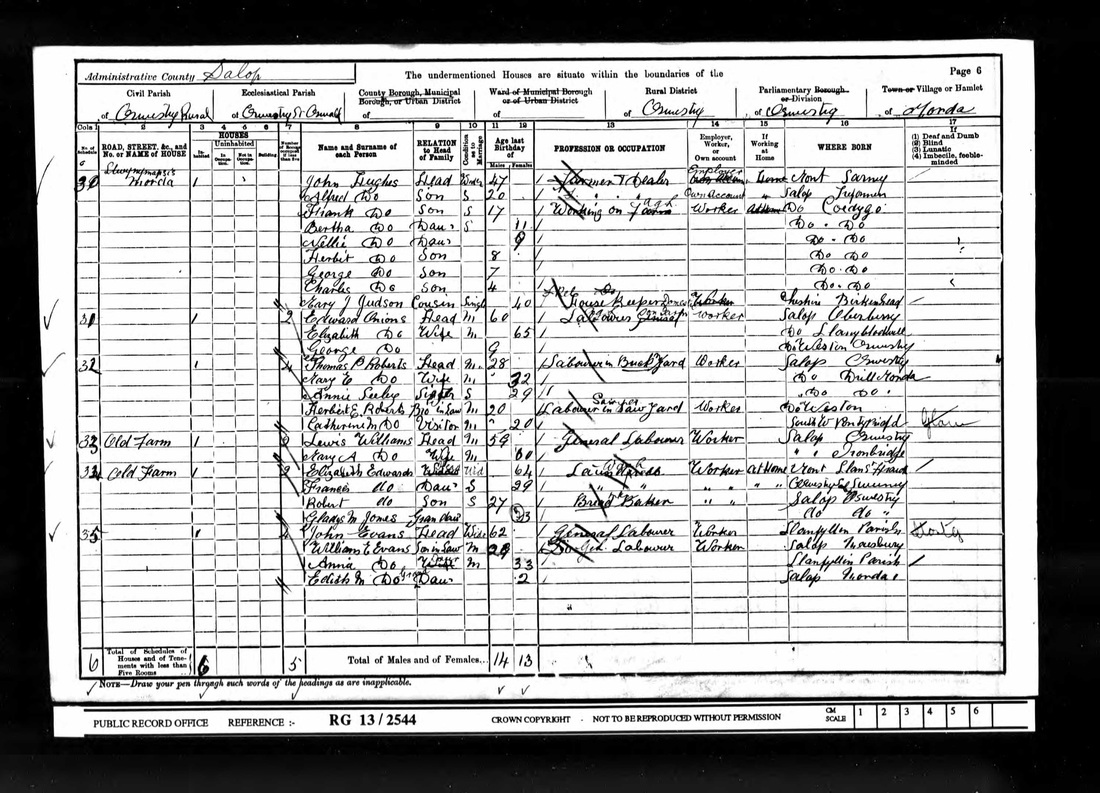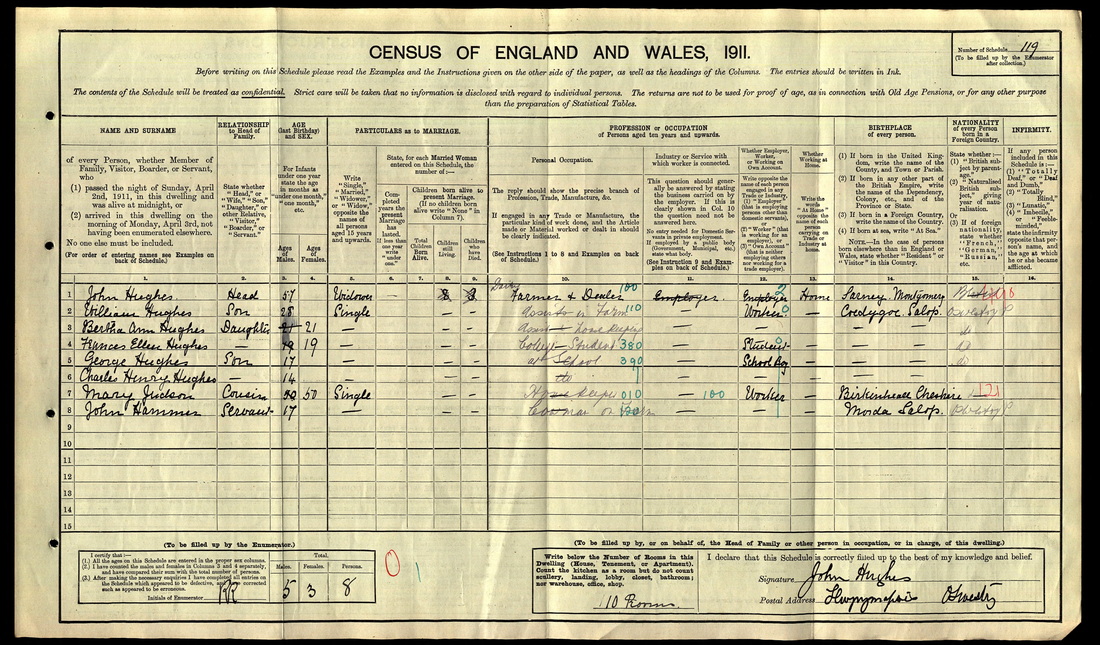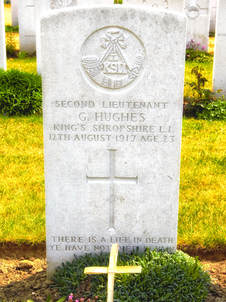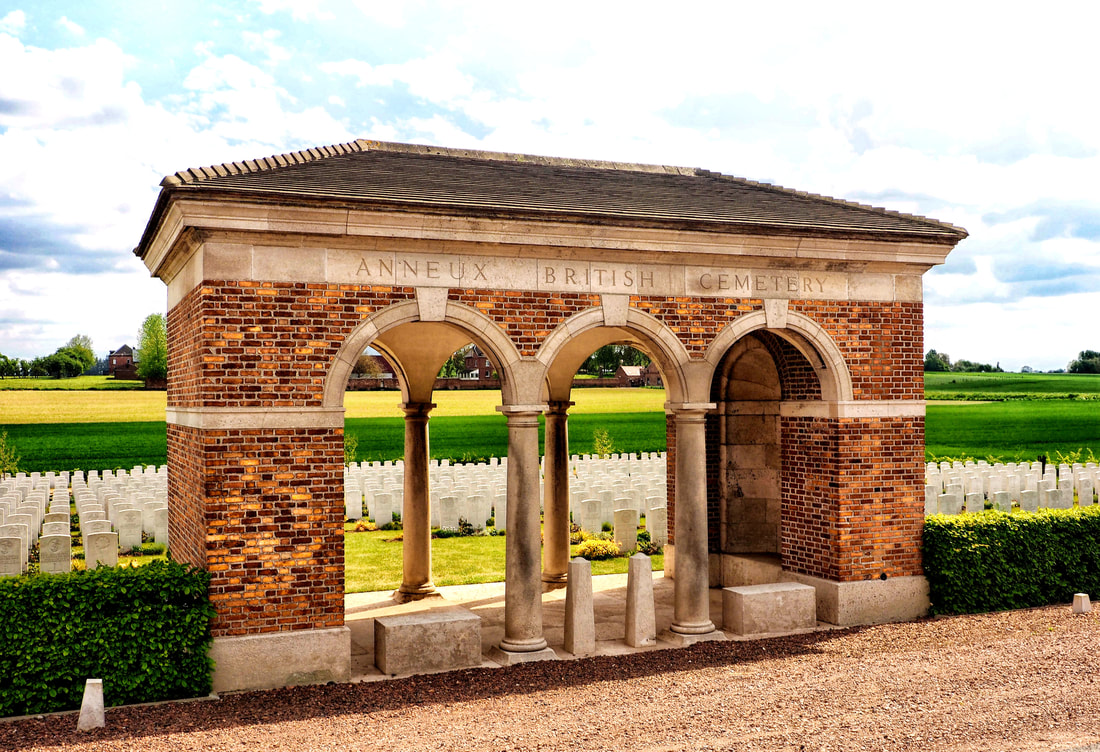George Hughes
|
Introduction
George Hughes was one of born in 1894 and was one of eleven children. His father John was a local farmer and dealer and they lived at Llywn-y-Mapsis Farm, Morda. George was educated at Oswestry Grammar School. After his education he went to work as a bank clerk with London City and Midland Bank in Liverpool. He joined the 1/6 Kings Liverpool Battalion which was a territorial unit which probably indicates he joined up before the war otherwise it is likely he would have joined the Liverpool City Pals at the outbreak of war along with many of his fellow office workers and clerks. Two of his brothers also took part in World War One. Charles Henry who was killed in August 1918 and is commemorated on this website and Frank who survived winning the Distinguished Conduct Medal. |
|
Military Record including Regimental and Battalion Information
Whilst serving with the King’s Liverpool he was wounded twice. He received his commission in November 1915 and was posted to 7th Battalion Kings Shropshire Light Infantry when he was wounded for a third time in March 1917. After convalescence he rejoined the battalion in July 1917. Over the nights of 11 and 12 August the battalion was to be relieved by the 2nd Battalion Royal Scots. The battalion had spent the previous week in the front line near to Vélu mid-way on the road between Baupaume and Cambrai on the Somme It had been a relatively quiet tour with no casualties. Lieutenant Hughes was leading a covering party whilst the relief was going on when they encountered a strong enemy patrol. A fire fight ensued. Ten of the enemy were killed as was Lieutenant Hughes along with one other rank as well as four wounded and one missing. The other fatality was Private 26391 G King who is buried next to Lieutenant Hughes in Anneux British Cemetery, both were re-interments after the war. The missing man was Private 23548 William Henry Poynton of Weston Rhyn and who is commemorated on their village war memorial and on the Arras Memorial. |
Census data
Historical Information
Anneux, Havrincourt and Graincourt were captured by the 62nd (West Riding) Division on 20 and 21 November 1917. Anneux remained in Allied hands until the following 6 December. It was recaptured on 27 September 1918, by the 57th (West Lancashire) and 63rd (Royal Naval) Divisions, acting with the 52nd (Lowland) and the 1st and 4th Canadian Divisions. These six divisions, with the New Zealand Division (which carried on the advance in October 1918), are most largely represented in the cemetery.
The original cemetery was made by the 57th Division Burial Officer and by various units in October 1918. At the Armistice it contained 131 graves but was then greatly increased when graves were brought in from the surrounding battlefields and small cemeteries in the area, including:-
DELMADGE CEMETERY, FONTAINE-NOTRE DAME, 900 metres North-East of the railway station, contained the graves of Lieut. R.B. Delmadge and 23 other Canadian soldiers who fell in September and October, 1918.
FLOT FARM CEMETERY, MARCOING, on the South side of a farm nearly 1.6 Kms West of Rumilly village. Thirty-four soldiers of the 2nd O.B.L.I., who fell on the 1st October, were buried there in one grave.
Anneux British Cemetery now contains 1,013 burials and commemorations of the First World War. 459 of the burials are unidentified but special memorials commemorate seven casualties believed to be buried among them.
The cemetery was designed by Sir Edwin Lutyens.
click on the link below for more information
http://www.cwgc.org/find-a-cemetery/cemetery/2000033/ANNEUX%20BRITISH%20CEMETERY
Anneux, Havrincourt and Graincourt were captured by the 62nd (West Riding) Division on 20 and 21 November 1917. Anneux remained in Allied hands until the following 6 December. It was recaptured on 27 September 1918, by the 57th (West Lancashire) and 63rd (Royal Naval) Divisions, acting with the 52nd (Lowland) and the 1st and 4th Canadian Divisions. These six divisions, with the New Zealand Division (which carried on the advance in October 1918), are most largely represented in the cemetery.
The original cemetery was made by the 57th Division Burial Officer and by various units in October 1918. At the Armistice it contained 131 graves but was then greatly increased when graves were brought in from the surrounding battlefields and small cemeteries in the area, including:-
DELMADGE CEMETERY, FONTAINE-NOTRE DAME, 900 metres North-East of the railway station, contained the graves of Lieut. R.B. Delmadge and 23 other Canadian soldiers who fell in September and October, 1918.
FLOT FARM CEMETERY, MARCOING, on the South side of a farm nearly 1.6 Kms West of Rumilly village. Thirty-four soldiers of the 2nd O.B.L.I., who fell on the 1st October, were buried there in one grave.
Anneux British Cemetery now contains 1,013 burials and commemorations of the First World War. 459 of the burials are unidentified but special memorials commemorate seven casualties believed to be buried among them.
The cemetery was designed by Sir Edwin Lutyens.
click on the link below for more information
http://www.cwgc.org/find-a-cemetery/cemetery/2000033/ANNEUX%20BRITISH%20CEMETERY
